Famous Scottish Artists – Scotland’s Top 15 Trailblazing Art Icons
Apart from the common Scottish painters of the 18th century, like Sir Henry Raeburn and Allan Ramsay, who are other famous Scottish artists that you need to know? In this article, we will explore the 15 most prolific and widely-recognized Scottish artists, whose contributions to painting, printmaking, design, and architecture have shaped the artistic landscape of Scottish art and tradition for centuries. Keep reading to learn more about these iconic Scottish artists!
Contents
- 1 An Introduction to Scottish Art
- 2 15 Famous Scottish Artists You Need to Know
- 2.1 Gavin Hamilton (1723 – 1798)
- 2.2 David Wilkie (1785 – 1841)
- 2.3 Francis Grant (1803 – 1878)
- 2.4 Amelia Robertson Hill (1821 – 1904)
- 2.5 James Guthrie (1859 – 1930)
- 2.6 Charles Rennie Mackintosh (1868 – 1928)
- 2.7 Frances MacDonald (1873 – 1921)
- 2.8 John Duncan Fergusson (1874 – 1961)
- 2.9 James McBey (1883 – 1959)
- 2.10 Penelope Beaton (1886 – 1963)
- 2.11 Anne Redpath (1895 – 1965)
- 2.12 Saul Yaffie (1898 – 1957)
- 2.13 Elizabeth Blackadder (1931 – 2021)
- 2.14 Peter Howson (1958 – Present)
- 2.15 Douglas Gordon (1966 – Present)
- 3 Frequently Asked Questions
An Introduction to Scottish Art
What is Scottish art, and what specific art styles and crafts have emerged from Scotland? When reviewing Scottish art history, one notices a distinct tradition of portraiture and landscape art that can be seen in the works of famous Scottish painters like Sir Henry Raeburn and Allan Ramsay. Scottish art history begins as early as the Neolithic era and extends into the Middle Ages, through Pictish art. Pictish art includes metalwork and stones that were carved in the early Medieval period. Some Pictish art featured motifs that ranged from abstract to figurative and symbolic.
These were found on Pictish stones, which is a specific kind of monumental stele carved with designs and ogham inscriptions.
Scottish artists have, for centuries, always maintained a connection with nature and the surrounding natural landscape, which inspired the birth of landscape painting specific to Scotland’s countryside and highlands. The majority of art from Scotland that was created since 900 CE focused on religion, however, after the Protestant Reformation of the 16th century, society saw a shift to the new Calvinist Church of Scotland, which destroyed much of the religious art. Another distinct style in Scottish art was the Scottish Renaissance painted ceilings, which grew in popularity after the appointment of King James VI as ruler of England and Scotland. This period saw a decline in arts funding with the court moving to London and leaving many artists to seek the aid of patrons. Painted ceilings found their way into private homes of the upper classes, of which only a couple hundred remain today.
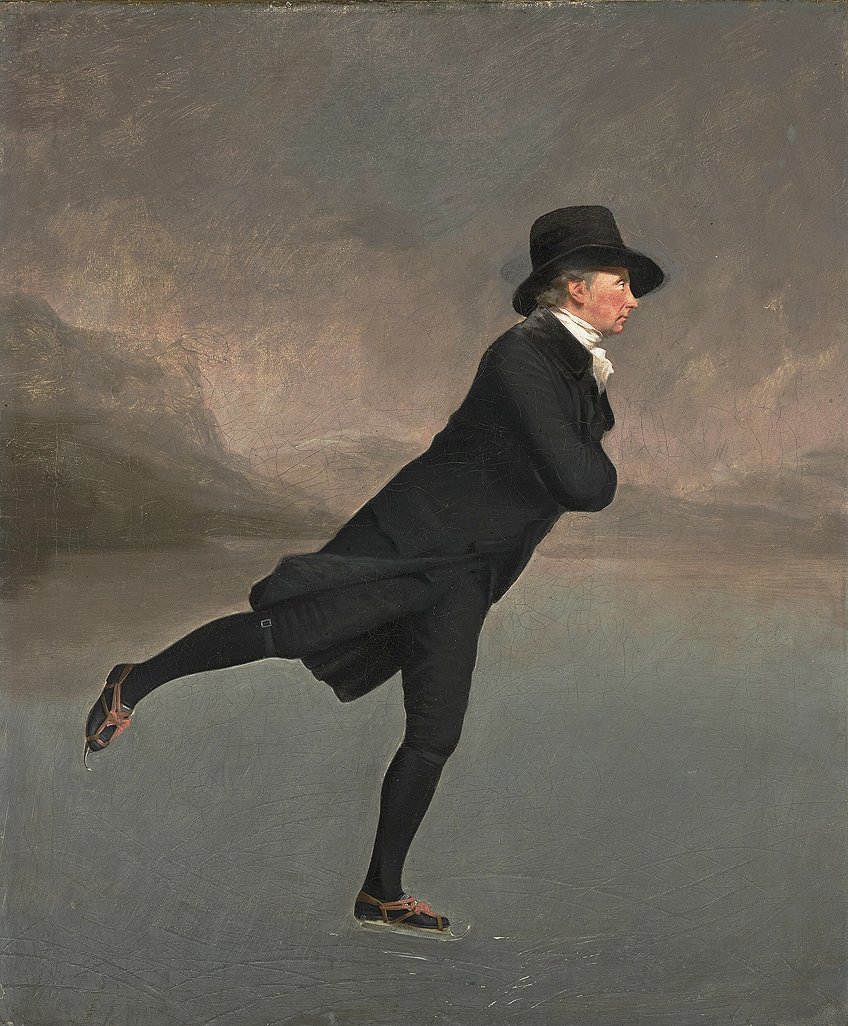
Of the most famous Scottish painters was Henry Raeburn, who throughout the 18th century, created portraits for many wealthy patrons and public figures. In the 18th century, the Scottish Enlightenment was at the forefront of societal and academic thinking, which influenced the growth of art as a profitable career. The establishment of the position of Royal Limner was an indication of the recognition of art and its appreciation by the monarchy. During this time, Scottish art was shaped by European influences, including Neoclassicism, antiquity styles, classical sculpture, mythology, Romanticism, and Italian and Dutch painting styles.
Artists like Alexander Nasmyth and Horatio McCulloch on the other hand later captured the mesmerizing beauty of lochs, resulting in timeless masterpieces that preserve Scotland’s national pride.
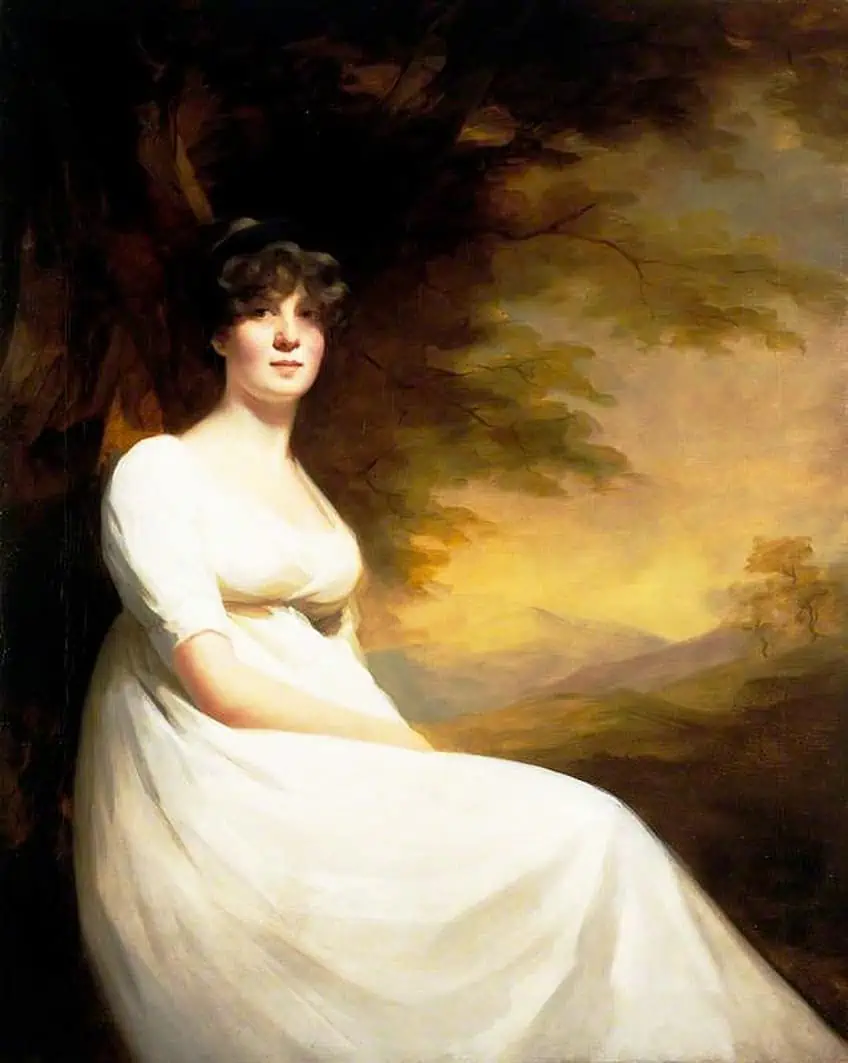
In sculpture, artists like Sandy Stoddart and William Lamb have merged the classical understandings of form with contemporary approaches while globally recognized printmakers like David Young Cameron secured Scotland’s place in the global community during the Etching Revival. The establishment of art institutions like The National Gallery of Scotland, the Royal Scottish Academy of Art, and the Glasgow Institute were products of the 19th century, including the most prominent schools; the Glasgow School of Art and Aberdeen’s Grays School of Art.
15 Famous Scottish Artists You Need to Know
Now that you have an idea of the trajectory of Scottish art history and the key styles that shaped it, you can look forward to learning more about the unique histories of these 15 famous Scottish artists.
Gavin Hamilton (1723 – 1798)
| Artist Name | Gavin Hamilton |
| Date of Birth | 1723 |
| Date of Death | 4 January 1798 |
| Place of Birth | Lanarkshire, United Kingdom |
| Associated Movements, Themes, and Styles | Neoclassicism, the Scottish Enlightenment, mythology, and history painting |
| Mediums | Painting |
| Famous Artworks |
|
Gavin Hamilton was a renowned 18th-century neoclassical painter and archaeologist, whose rise to fame was defined by his contributions to mythological and history painting. Hamilton’s paintings were characterized by their bold use of Realism, which was appreciated during his day. The famous Scottish artist was born in Lanarkshire in 1723 and progressed in his art career throughout the 1760s, becoming one of the most influential artists in the field of ancient art and classical antiquity.
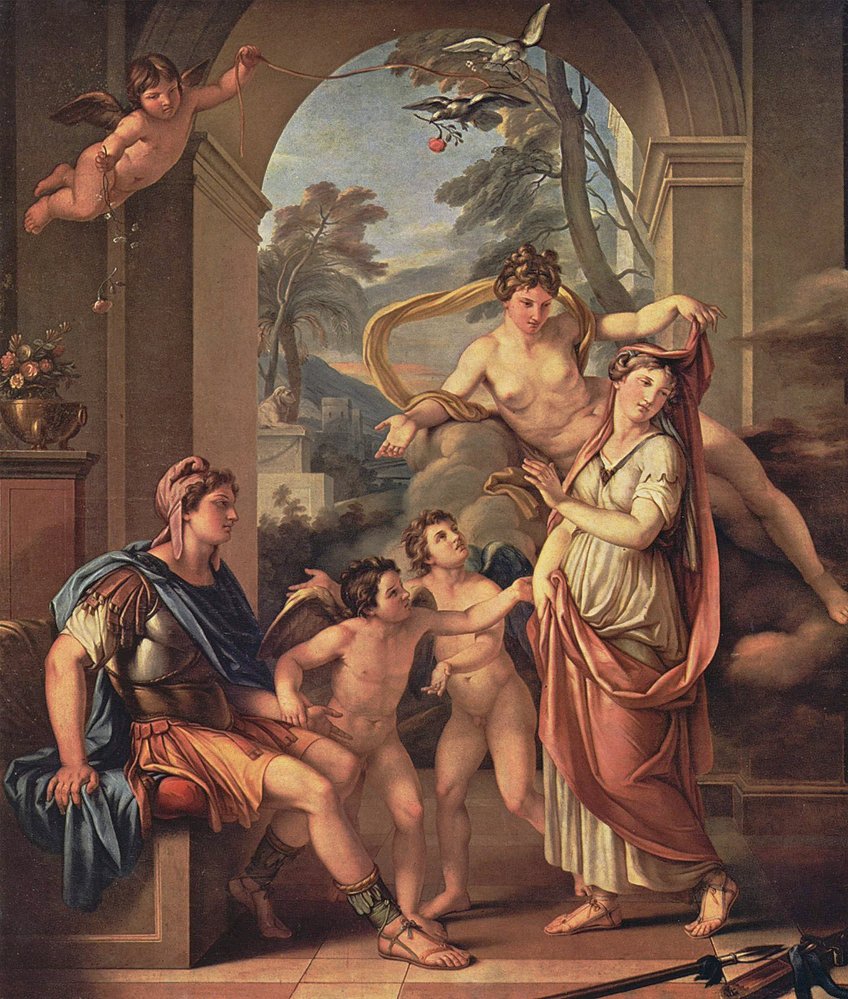
Furthermore, Hamilton was also an art dealer, who took up sculpture restorations on the side and even participated in excavations in Tivoli at the Hadrian’s Villa between 1769 and 1771. He was known to have collaborated with Giovanni Battista Piranesi and provided advice to Antonio Canova on occasion. Among some of his most famous pieces in painting include scenes from Homer’s Iliad, which Hamilton produced in the 1760s.
David Wilkie (1785 – 1841)
| Artist Name | Sir David Wilkie |
| Date of Birth | 18 November 1785 |
| Date of Death | 1 June 1841 |
| Place of Birth | Fife, United Kingdom |
| Associated Movements, Themes, and Styles | Romanticism, history painting, portraiture, and genre painting |
| Mediums | Painting |
| Famous Artworks |
|
David Wilkie was perhaps one of the most influential Scottish painters of the 19th century, whose approach to genre painting and portraiture was admired by many. Wilkie was widely respected for his analytical eye and observations on human behavior, which seeped into his detailed paintings to capture the subtle nuances of daily life and interactions.
Wilkie was best known for his expert storytelling capabilities, which were preserved in works such as The Blind Fiddler (1806) and Chelsea Pensioners reading the Waterloo Dispatch (1822), which showcase a higher level of emotional depth.
In addition to history scenes, Wilkie also painted royal portraits and landscapes from his extensive travels throughout the Middle East and Europe. He was also recognized as the “people’s painter” and had his passion for art rooted early on in his childhood. He also studied under the guidance of John Graham and developed his style from using rich tones and powerful hues to a less evocative style, which was criticized often in his mature period, leading to a loss of favor among the public.

Francis Grant (1803 – 1878)
| Artist Name | Sir Francis Grant |
| Date of Birth | 18 January 1803 |
| Date of Death | 5 October 1878 |
| Place of Birth | Scotland, United Kingdom |
| Associated Movements, Themes, and Styles | Portraiture |
| Mediums | Painting |
| Famous Artworks |
|
Francis Grant was among the most renowned Scottish artists of the 19th century, who was best known for his exquisite portraits and genre scene paintings. Grant was born in Scotland and developed his passion for art quite early in his childhood. He attended the Royal Academy in London, where he honed his skills in portraiture and animal painting.
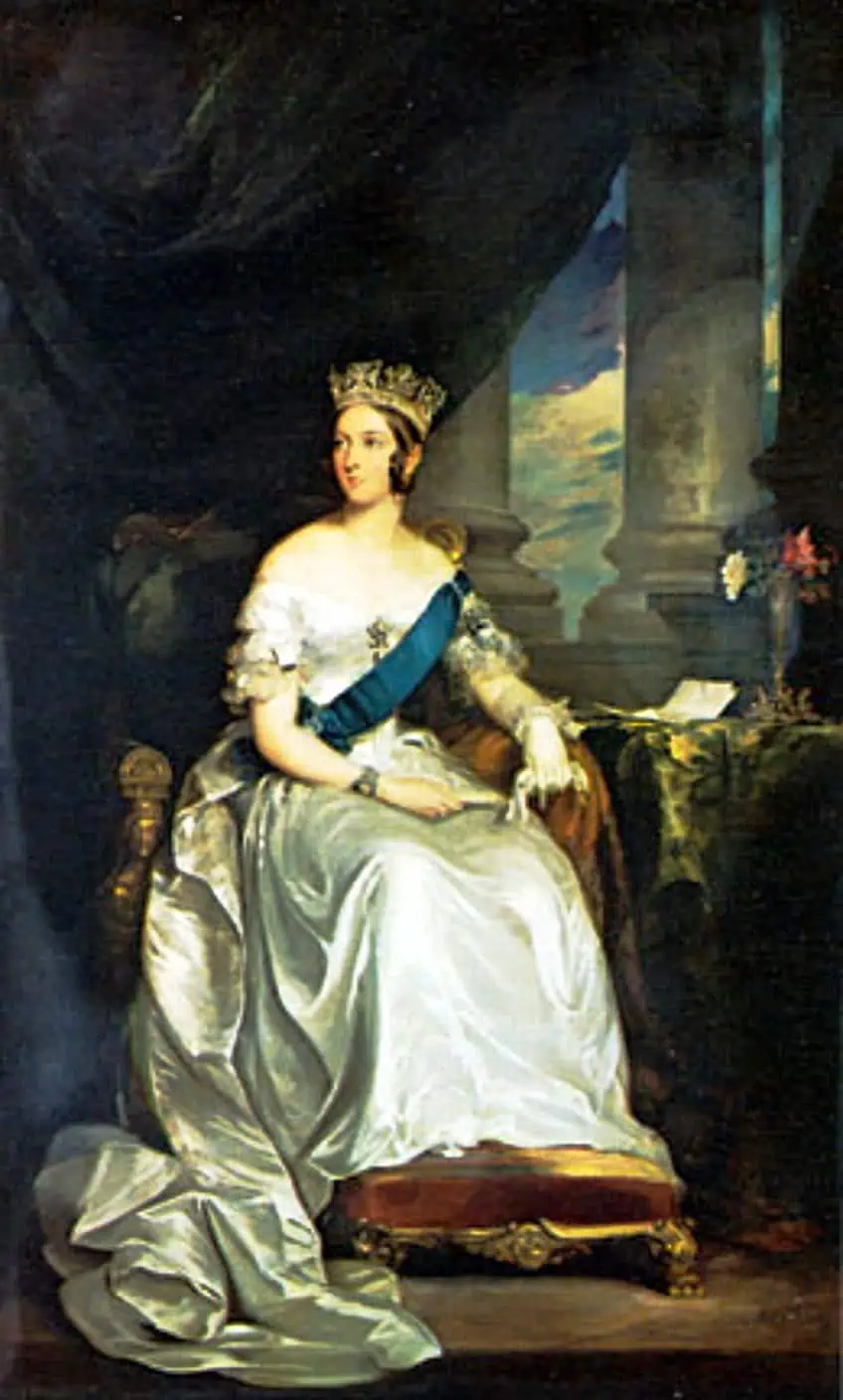
Many scholars admire his work and ability to breathe life into his paintings and recognize him as a talented equine painter. His paintings of horses were particularly powerful as they captured the grace and character of horses with unparalleled precision. Grant was also the President of the Royal Academy and maintained a respectable standing with his community, thus earning him patronage from multiple influential figures of his day.
Amelia Robertson Hill (1821 – 1904)
| Artist Name | Amelia Robertson Hill (Emmilia McDermaid Paton) |
| Date of Birth | 15 January 1821 |
| Date of Death | 5 July 1904 |
| Place of Birth | Dunfermline, United Kingdom |
| Associated Movements, Themes, and Styles | Portraiture and bronze sculpture |
| Mediums | Drawing and sculpture |
| Famous Artworks |
|
Amelia Robertson Hill is among the most famous female Scottish artists of the 19th century, whose determination in a male-dominated world shattered the expectation of those who did not think that a woman could reach the level of recognition that Hill did. Hill pursued formal art training and focused primarily on genre scenes, rural life, and landscapes in her practice. Through her vibrant use of color, texture, and atmospheric light, Hill drew attention to the picturesque nature of the Scottish countryside and later became one of the first female artists of the Royal Scottish Society of Painters in Watercolour. Today, her legacy lives on through her paintings, which have become symbols of not only Scottish heritage but also the resilience of women in art.
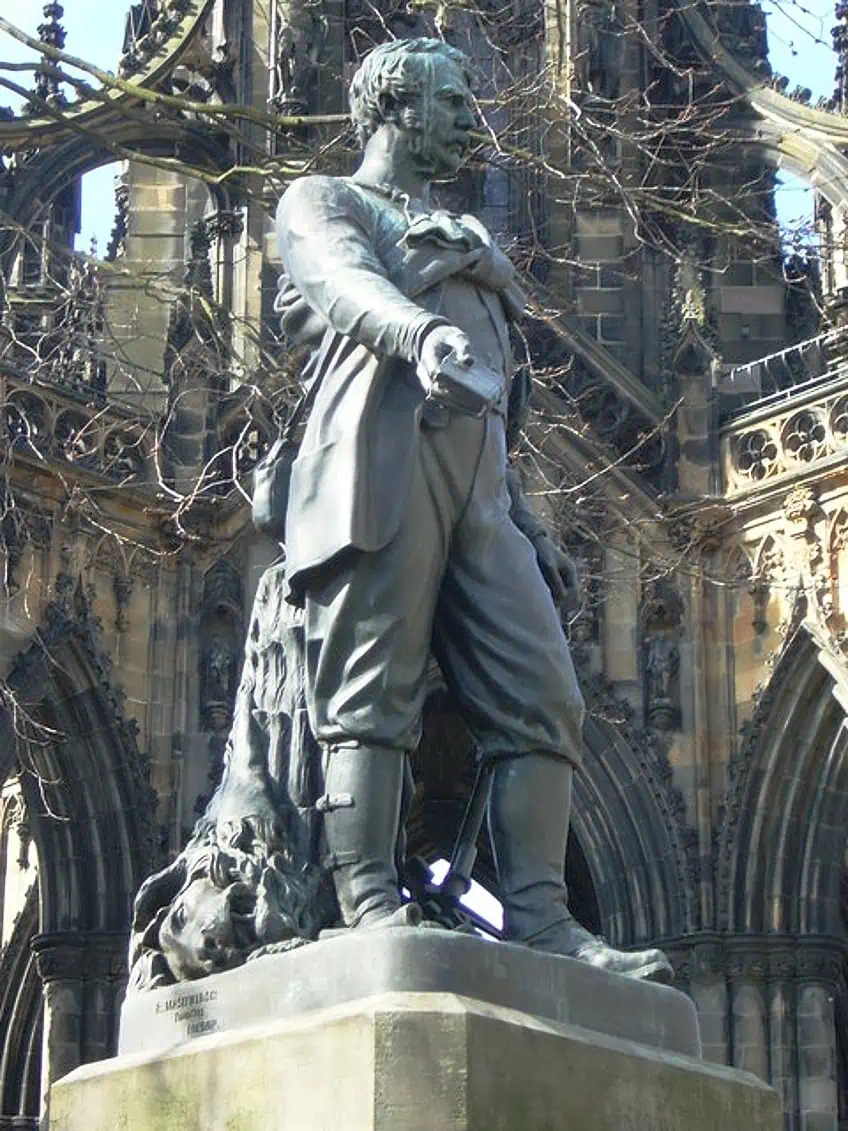
James Guthrie (1859 – 1930)
| Artist Name | Sir James Guthrie |
| Date of Birth | 10 June 1859 |
| Date of Death | 6 September 1930 |
| Place of Birth | Greenock, United Kingdom |
| Associated Movements, Themes, and Styles | Scottish Realism, Modern art, the Glasgow Boys, and portraiture |
| Mediums | Painting |
| Famous Artworks |
|
Born in Greenock, James Guthrie was one of the most impactful Scottish painters of Scottish Realism. Guthrie was recognized for his contributions to the development of the Glasgow Boys Collective and their innovative approaches to art. His early talents in painting led him to pursue art at the Glasgow School of Art, where he was taught by some of the most famous artists like Sir Edward Burne-Jones.

Guthrie’s paintings depicted Scottish rural life and were painted in the realism style to convey a sense of authenticity. His painting technique was defined by his keen eye for depicting human emotions, as well as balancing color and light expertly to produce evocative works. Additionally, he also explored social themes such as the struggles of the working class, which made him one of the most revered artists in Scottish art history.
Charles Rennie Mackintosh (1868 – 1928)
| Artist Name | Charles Rennie Mackintosh |
| Date of Birth | 7 June 1868 |
| Date of Death | 10 December 1928 |
| Place of Birth | Townhead, Glasgow, United Kingdom |
| Associated Movements, Themes, and Styles | European Symbolism, Art Deco, and Modern art |
| Mediums | Painting, design, and architecture |
| Famous Artworks |
|
Charles Rennie Mackintosh was among the most famous Scottish artists and architects of the 19th century, whose contribution to design in the Arts and Crafts Movement and Art Nouveau was recognized for its significant impact. Mackintosh’s designs were characterized by the use of elegant line work fused with harmonious details that merge the best of form and function. His works include interior designs and various unique furniture pieces. His most famous design was for the Glasgow School of Art building, which skyrocketed his name to fame. One of his best-known designs is the Mackintosh rose, which is appreciated for its round distortion and is recognized as one of the most memorable Mackintosh designs.

Frances MacDonald (1873 – 1921)
| Artist Name | Frances Macdonald MacNair |
| Date of Birth | 24 August 1873 |
| Date of Death | 12 December 1921 |
| Place of Birth | Staffordshire, United Kingdom |
| Associated Movements, Themes, and Styles | Modern art, the Arts and Crafts movement, Art Nouveau, and the Glasgow style |
| Mediums | Painting and drawing |
| Famous Artworks |
|
Influenced by the symbolism of Celtic designs and the modern edge of Art Nouveau, Frances MacDonald was one of the most famous Scottish artists of the early Modern period. MacDonald was largely associated with the Scottish Arts and Crafts movement and was born into a family of artists in Staffordshire. MacDonald’s brother was the renowned Charles Rennie Mackintosh, who like MacDonald, left a significant impact on Scottish art.
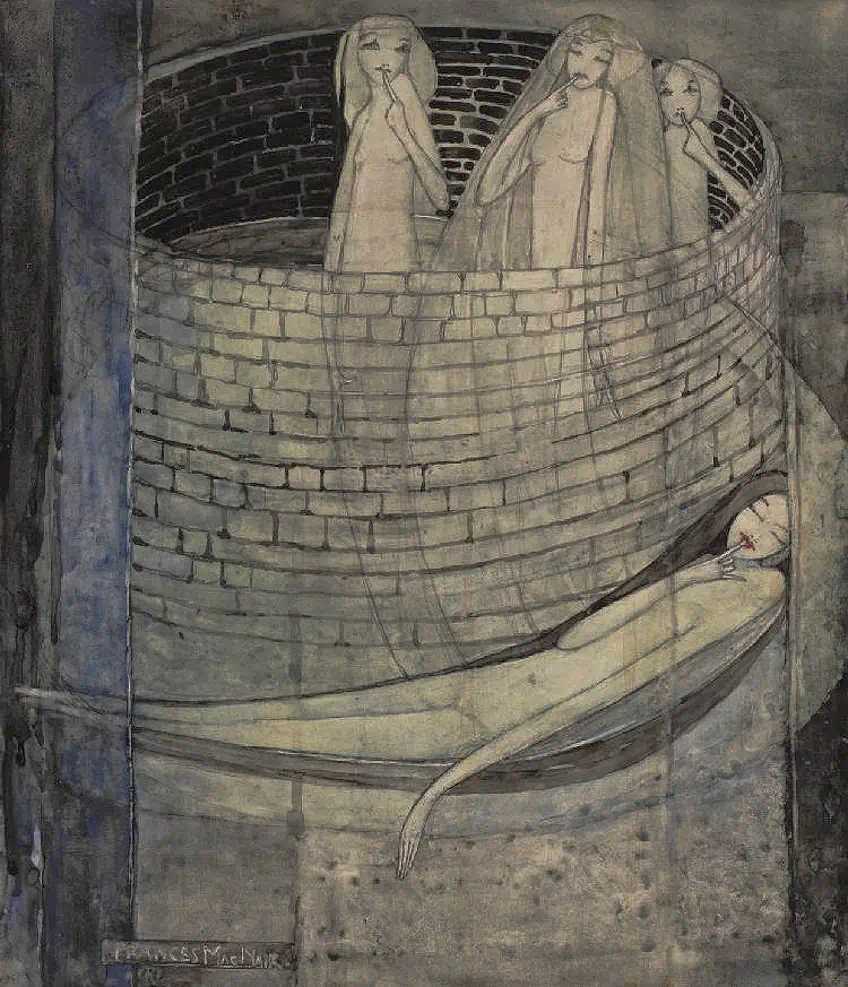
MacDonald’s works merged the eccentric styles of symbolism and Art Nouveau with cultural motifs, which the siblings collaborated to form a close-knit collective called The Four, which included their other sister Margaret, and her husband, Herbert McNair. MacDonald’s works were characterized by intricate illustrations, natural motifs, and decorative panels that conveyed a sense of spirituality. Recurring themes inspired by mythology and the natural world are also featured in her work to give it a sense of mysticism and elegance.
Today, she is recognized as one of the most influential artists in shaping the evolution of the Glasgow Style.
John Duncan Fergusson (1874 – 1961)
| Artist Name | John Duncan Fergusson |
| Date of Birth | 9 March 1874 |
| Date of Death | 30 January 1961 |
| Place of Birth | Leith, Edinburgh, United Kingdom |
| Associated Movements, Themes, and Styles | The Scottish Colourists school, Fauvism, and portraiture |
| Mediums | Painting |
| Famous Artworks |
|
John Duncan Fergusson was a prominent figure in Scottish art history, who was born in Scotland and went on to influence the styles of the Scottish Colourists school in the early 20th century. Fergusson’s artistic career took off after his experiences in Paris, where he immersed himself in the many emerging modern cultures and styles in art. He was particularly drawn to the Fauvist movement, which shifted his style and resulted in his work becoming more dynamic in composition and color.
Fergusson captured many scenes from Parisian society in his paintings with the most energetic ones depicting the music and dance hubs of Parisian cabarets and the Scottish Highlands, rendered in abstract colors. Through such experiences, Fergusson developed a fascination with movement and rhythm, which can be observed in his work. He also co-founded the Scottish Colorists group and infused the modernist spirit of the 20th century in his expressive paintings that explored the human form, female figures, and the rhythm of dance.
James McBey (1883 – 1959)
| Artist Name | James McBey |
| Date of Birth | 23 December 1883 |
| Date of Death | 1 December 1959 |
| Place of Birth | Newburgh, United Kingdom |
| Associated Movements, Themes, and Styles | Portraiture and Modern art |
| Mediums | Painting and printmaking |
| Famous Artworks |
|
James McBey was a pioneering watercolorist and printmaker, whose skills in etching were greatly admired by many. McBey was born in Newburgh and developed his artistic skills from an early age. His art career gained traction in the early 20th century after he explored detailed etchings, which demonstrated his deep understanding of composition and form. Primarily a portrait artist, McBey traveled extensively across the world and captured the landscapes and portraits of those he met along the way.
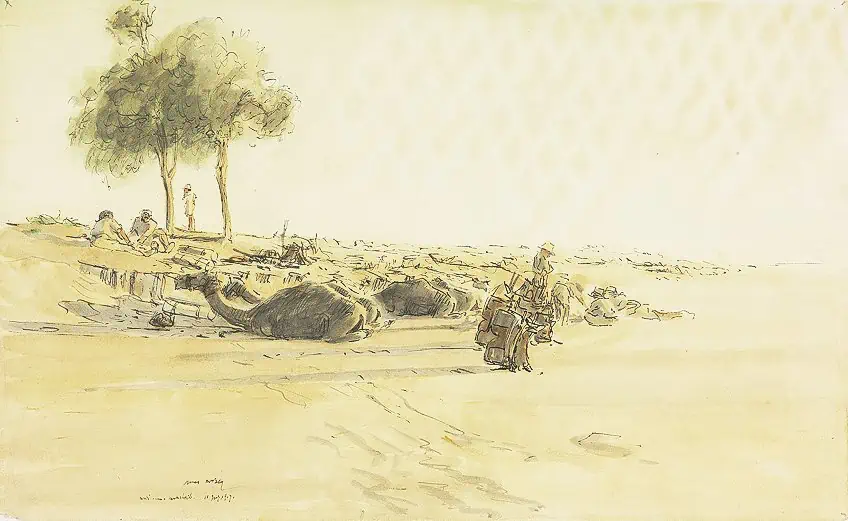
His experiences in the Middle East, including North Africa and Spain had a profound influence on the development of his practice, which led to his distinct style of Eastern and European influence. One of the best features of his work was that his etchings displayed his passion for the intricacies of architecture, such that his work was executed with remarkable precision.
Penelope Beaton (1886 – 1963)
| Artist Name | Penelope Beaton |
| Date of Birth | 1886 |
| Date of Death | 1963 |
| Place of Birth | Edinburgh, United Kingdom |
| Associated Movements, Themes, and Styles | Expressionism, Modern art, art education, and landscape painting |
| Mediums | Painting |
| Famous Artworks |
|
A watercolor master, famous Scottish artist Penelope Beaton was a natural talent from an early age and displayed remarkable skills in watercolor painting. Beaton graduated from the Edinburgh College of Art and went on to showcase the beauty of Scottish landscapes and rural life in her charming watercolor paintings. From rolling hills to coastal landscapes, Beaton’s observations on the Scottish countryside gained her widespread recognition. Her style was characterized as Romantic as she demonstrated her appreciation for Scottish culture through her still-lifes and landscapes.
Beaton was also a respected educator, who inspired many art students through her dedication to her talent.
Anne Redpath (1895 – 1965)
| Artist Name | Anne Redpath |
| Date of Birth | 29 March 1895 |
| Date of Death | 7 January 1965 |
| Place of Birth | Galashiels, United Kingdom |
| Associated Movements, Themes, and Styles | The Edinburgh School and Domestic Still-life |
| Mediums | Painting |
| Famous Artworks |
|
Anne Redpath was a famous modern Scottish painter, whose works were admired for her expressive style and fusion of traditional Scottish themes with a modern twist. Redpath was born in Galashiels and later settled in Edinburgh, where her art career flourished. Her works were informed by her travels across Italy and France, and characterized by her use of vibrant colors in scenes that captured the beauty and warmth of everyday life.
In her paintings, Redpath depicted domestic scenes, landscapes, and still-lifes that accentuated her brushwork and knowledge of bold colors and light. Her paintings were often praised for their sense of vitality and movement, which was influenced by Redpath’s interest in French Fauvism. Throughout her career, she received numerous accolades and awards and was the first female artist to be elected as a Royal Academician since the 18th century.
Saul Yaffie (1898 – 1957)
| Artist Name | Saul Yaffie (also known as Paul Jeffay) |
| Date of Birth | 29 April 1898 |
| Date of Death | 1957 |
| Place of Birth | Glasgow, United Kingdom |
| Associated Movements, Themes, and Styles | Post-war art and early modern art |
| Mediums | Painting, drawing, and poster design |
| Famous Artworks |
|
Saul Yaffie, also known as Paul Jeffay, was a famous Scottish-Jewish artist who was born in Glasgow in 1898. Yaffie specialized in painting and poster design and has been recorded as attending classes at The Glasgow School of Art between 1912 and 1919, and received his diploma in drawing and painting around 1916. Yaffie’s father moved to the Gorbals after fleeing from Russia, which would have exposed Yaffie, who was a young toddler, to the Scottish-Jewish community of Glasgow.
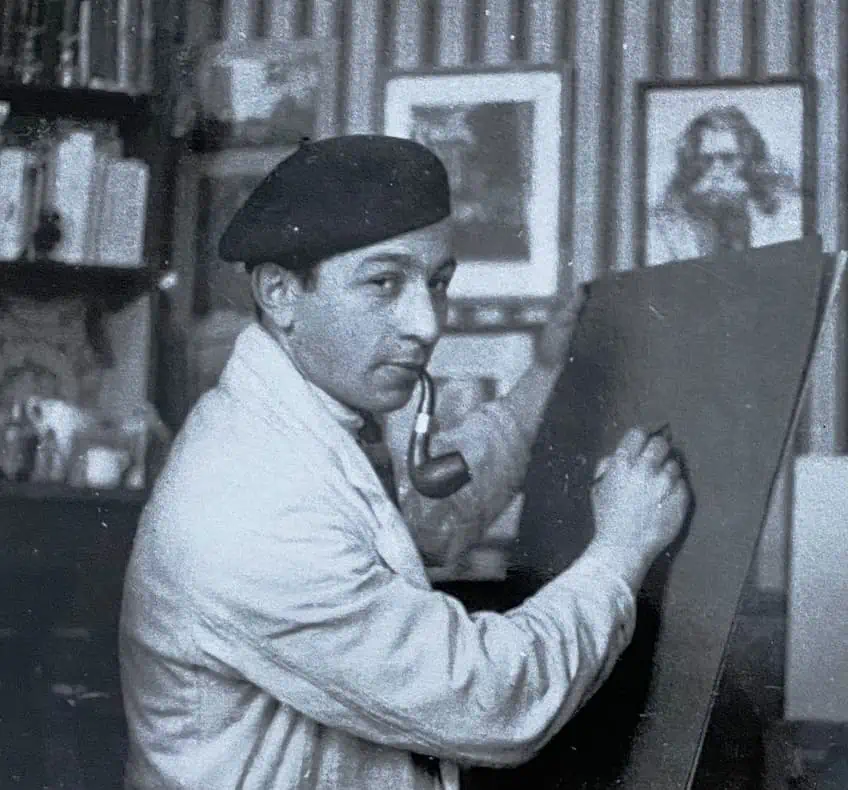
While not much is known about Yaffie, the artist had to pause his studies due to his military conscription in 1917 during the First World War. His return to classes only resumed around 1919 but due to post-war economic stress, Yaffie’s family had to emigrate to Canada while he moved to Paris to continue his artistic pursuits. It was only later that Yaffie took up the name Paul Jeffay, which he used to sign many of his works after the war.
Elizabeth Blackadder (1931 – 2021)
| Artist Name | Dame Elizabeth Violet Blackadder |
| Date of Birth | 24 September 1931 |
| Date of Death | 23 August 2021 |
| Place of Birth | Falkirk, United Kingdom |
| Associated Movements, Themes, and Styles | Still-life, landscape painting, Zen philosophy, and cat painting |
| Mediums | Painting, drawing, and printmaking |
| Famous Artworks |
|
Born in Falkirk as Dame Elizabeth Violet Blackadder, famous Scottish artist Elizabeth Blackadder was one of the best painters of still-life and landscape painting. The prominent artist was celebrated for her diverse mastery over mediums such as printmaking, drawing, and painting, including her endearing still-lifes and landscapes. Blackadder studied at the Edinburgh College of Art and later at the Royal College of Art in London.
Her style was shaped by her passion for the natural world and close attention to form and color.
As such, her works featured many floral and botanical arrangements, which showcased the artist’s appreciation for nature and delicate beauty. Blackadder’s unique style can be described as caught in the balance between abstraction and Realism, which makes her works appear delicately handled. Her printed works show her experimentation with techniques like aquatint and etching, which led to her becoming the first woman to be elected to the Royal Scottish Academy and the Royal Academy of Arts.
Peter Howson (1958 – Present)
| Artist Name | Peter Howson |
| Date of Birth | 27 March 1958 |
| Place of Birth | London, United Kingdom |
| Associated Movements, Themes, and Styles | Bosnian War, Contemporary art, Cubism, and Surrealism |
| Mediums | Painting |
| Famous Artworks |
|
Peter Howson is one of the most famous contemporary Scottish artists to date, who is renowned for his provocative paintings. Howson was born in London and raised in Scotland, which deeply impacted his later works. His paintings reflect his deep resonance and connection to his Scottish heritage informed by his childhood and experiences as a war artist during the Bosnian War. Howson’s style is described as unapologetic, raw, and emotionally profound in its depiction of the human condition, including themes of poverty, struggle, and other social issues. Howson received many accolades throughout his career, including the John Player Portrait Award in 1988. Since then, his works have been exhibited internationally and were recognized for their depiction of anguish during times of conflict.

Douglas Gordon (1966 – Present)
| Artist Name | Douglas Gordon |
| Date of Birth | 20 September 1966 |
| Place of Birth | Glasgow, United Kingdom |
| Associated Movements, Themes, and Styles | Contemporary art, collective memory |
| Mediums | Video art, performance, installation, and photography |
| Famous Artworks |
|
Douglas Gordon is among the most famous contemporary Scottish artists from Glasgow, who is recognized for his compelling and introspective multimedia installations. Through a blend of video, performance, and installation, Gordon explores the complex landscape of the modern human experience, which left many intriguing works for viewers to ponder over. One of his most famous works was 24 Hour Psycho (1993), which was a dramatic slowed-down version of Alfred Hitchcock’s iconic film that lasted for an entire day.
An icon of Conceptual art, Gordon also collaborated with Philippe Parreno on a film portrait, which culminated in the 2006 work Zidane: A 21st Century Portrait, which captured Zinedine Zidane’s moves from each match in an intimate depiction of his emotions and focus during matches. Since then, Gordon has received global acclaim and was awarded the 1996 Turner Prize for his psychologically provocative works.
The artistic legacy of Scottish art has seen many significant contributions by Scottish artists since modern periods like Art Nouveau and experimental thinkers like Frances MacDonald and Anne Redpath. While some Scottish artists like Saul Yaffie and Penelope Beaton may not be as well-known as their other contemporaries, their influence in the local art scene has undoubtedly enriched the artistic heritage of Scotland.
Frequently Asked Questions
Who Was the Most Famous Scottish Artist of the 19th Century?
Henry Raeburn was regarded as the most famous Scottish painter of the 19th century, who was renowned for serving as a portrait painter for King George IV. He was also recognized as the first Scottish artist to operate primarily in his own country.
Which Scottish Artists Were Part of the Glasgow Four?
The famous Art Nouveau group known as the Glasgow Four included the Scottish artists Frances Macdonald, Margaret Macdonald, Charles Rennie Mackintosh, and Herbert McNair. These artists worked together to produce multimedia works that contributed to the evolution of the Modern Style.
Who Was the Most Famous Scottish Artist of Landscape Painting?
William McTaggart was regarded as the most famous Scottish artist of landscape painting in the 19th century, who was referred to as the Scottish Impressionist painter and compared to the talents of John Constable.
Jordan Anthony is a Cape Town-based film photographer, curator, and arts writer. She holds a Bachelor of Art in Fine Arts from the University of the Witwatersrand, Johannesburg, where she explored themes like healing, identity, dreams, and intuitive creation in her Contemporary art practice. Jordan has collaborated with various local art institutions, including the KZNSA Gallery in Durban, the Turbine Art Fair, and the Wits Art Museum. Her photography focuses on abstract color manipulations, portraiture, candid shots, and urban landscapes. She’s intrigued by philosophy, memory, and esotericism, drawing inspiration from Surrealism, Fluxus, and ancient civilizations, as well as childhood influences and found objects. Jordan is working for artfilemagazine since 2022 and writes blog posts about art history and photography.
Learn more about Jordan Anthony and about us.
Cite this Article
Jordan, Anthony, “Famous Scottish Artists – Scotland’s Top 15 Trailblazing Art Icons.” artfilemagazine – Your Online Art Source. November 24, 2023. URL: https://artfilemagazine.com/famous-scottish-artists/
Anthony, J. (2023, 24 November). Famous Scottish Artists – Scotland’s Top 15 Trailblazing Art Icons. artfilemagazine – Your Online Art Source. https://artfilemagazine.com/famous-scottish-artists/
Anthony, Jordan. “Famous Scottish Artists – Scotland’s Top 15 Trailblazing Art Icons.” artfilemagazine – Your Online Art Source, November 24, 2023. https://artfilemagazine.com/famous-scottish-artists/.



